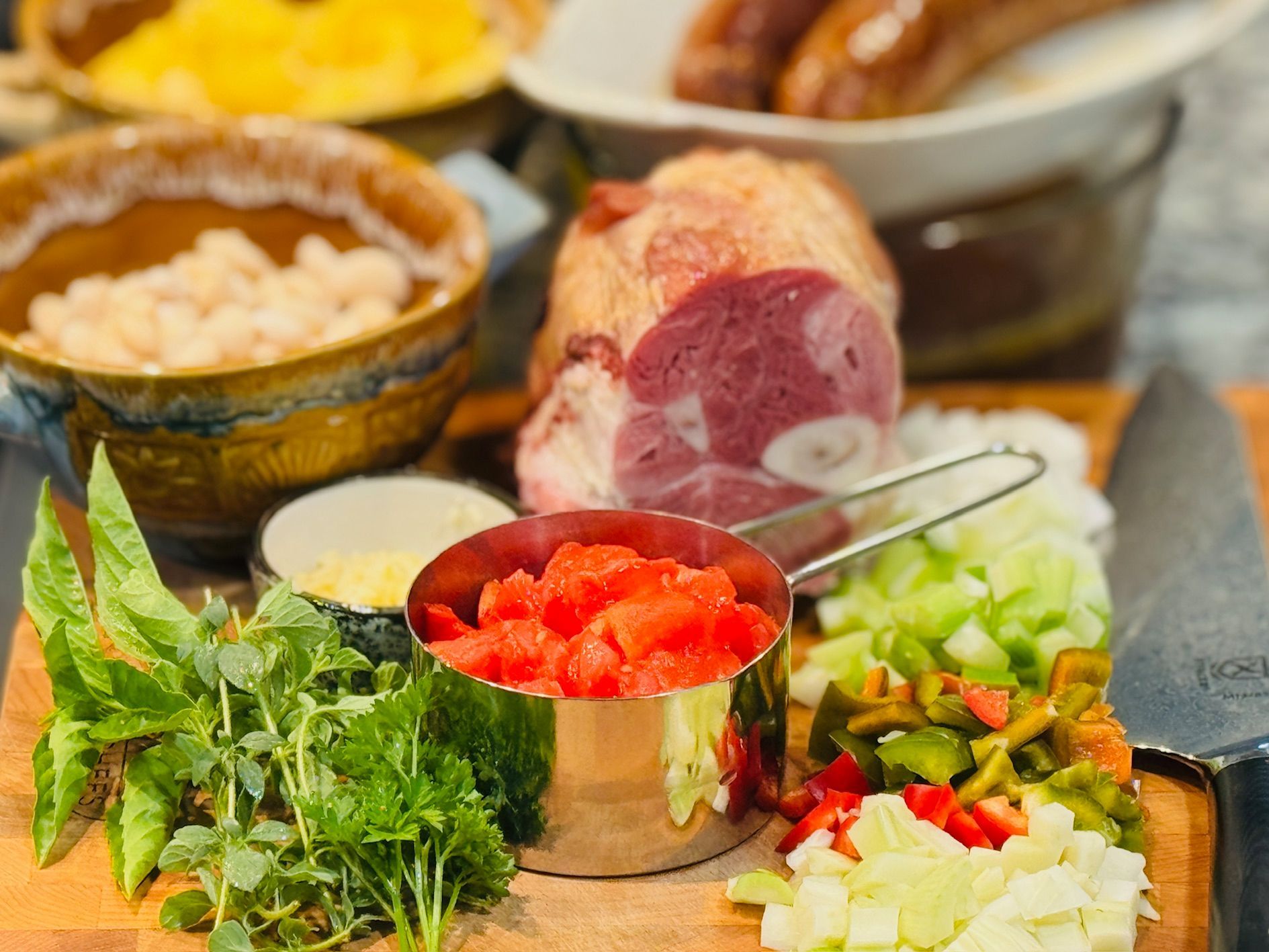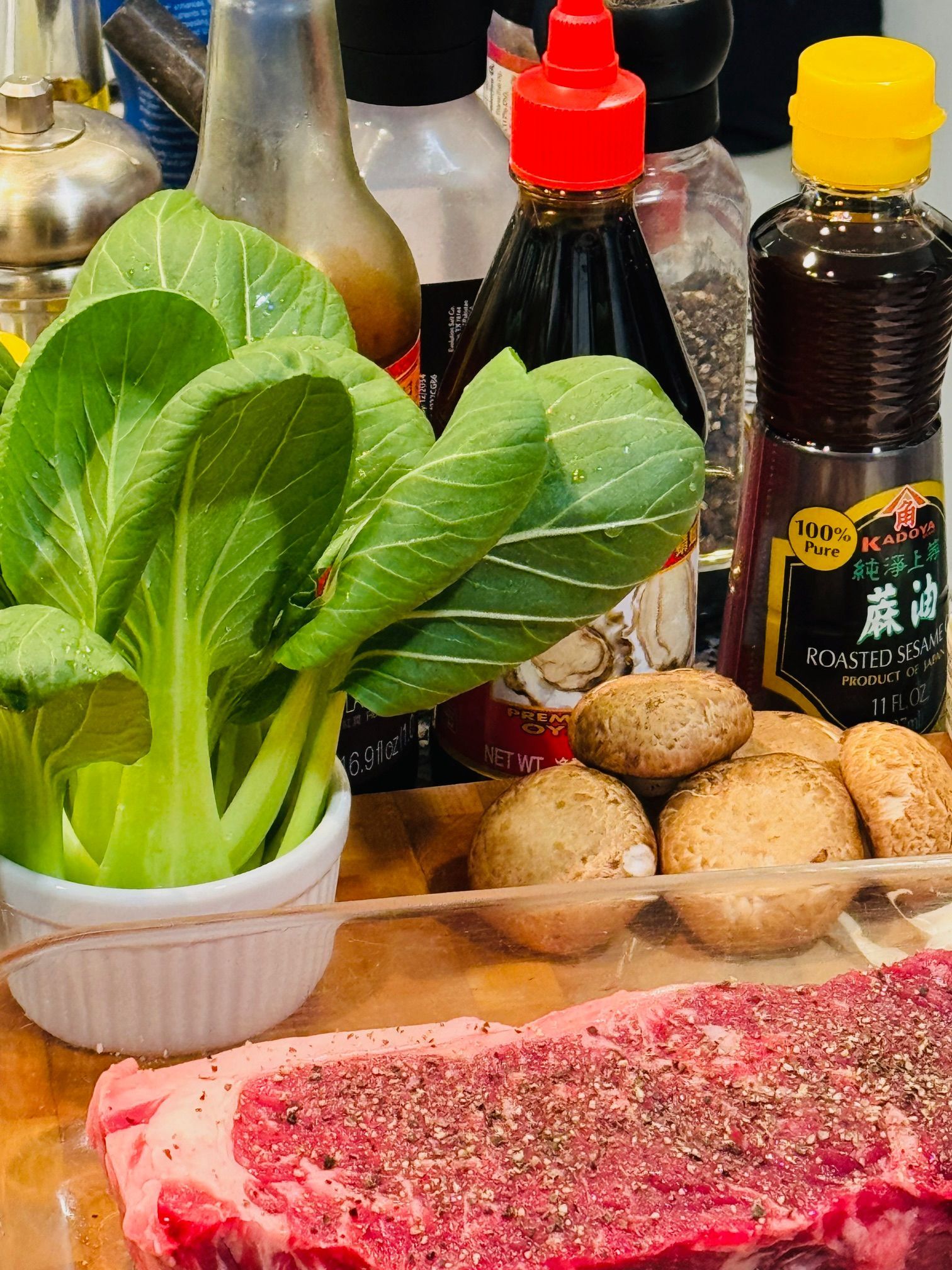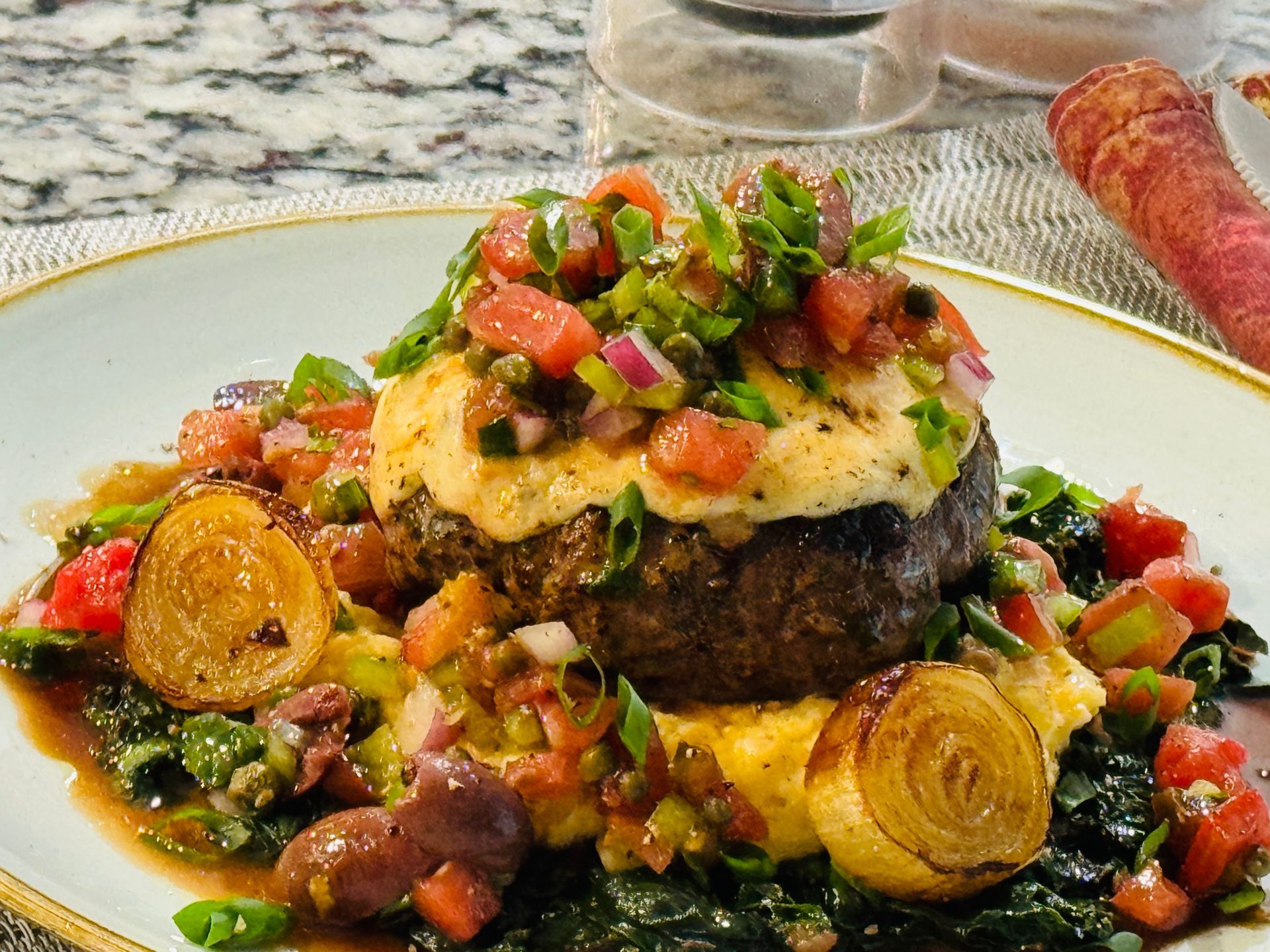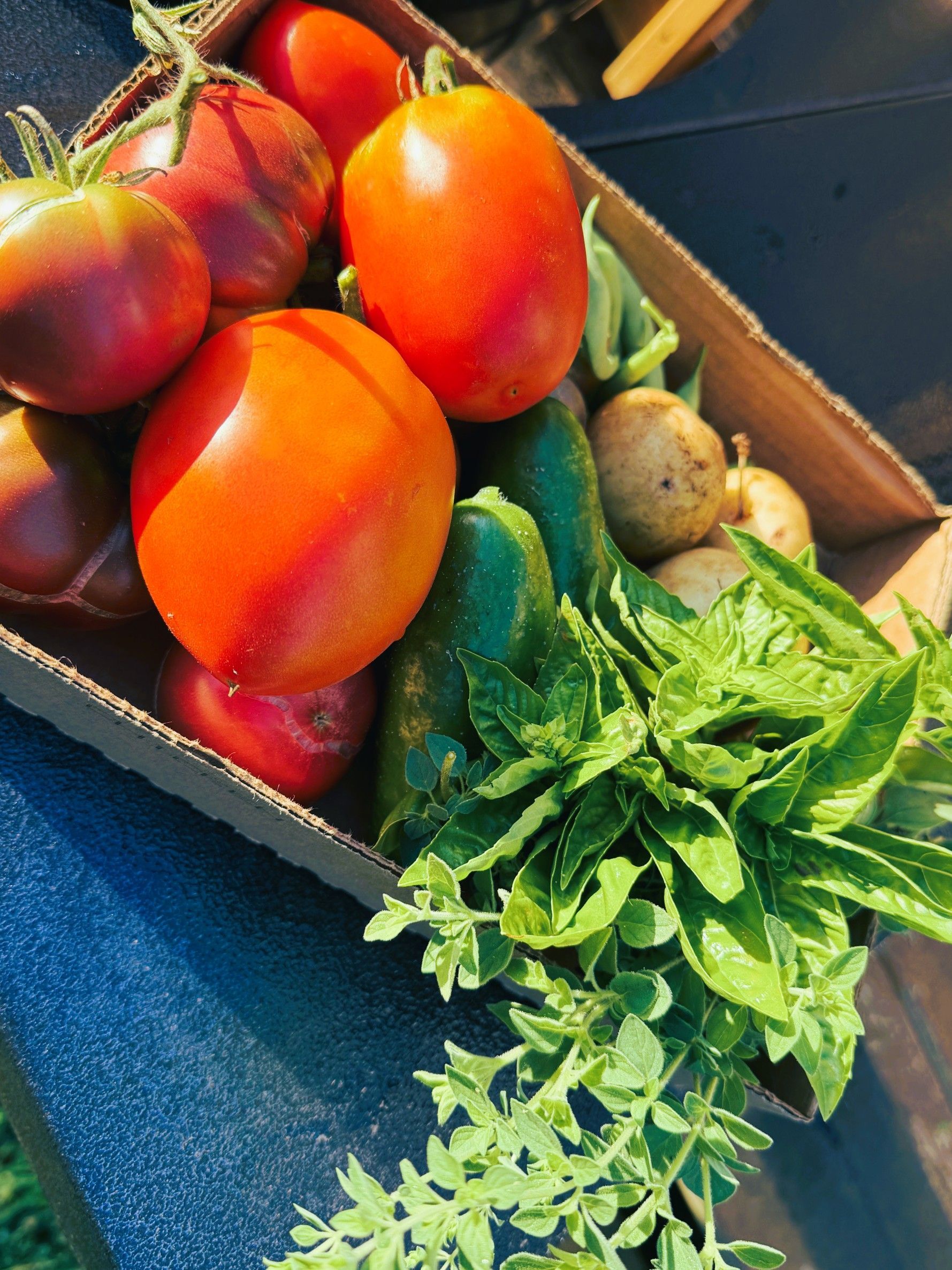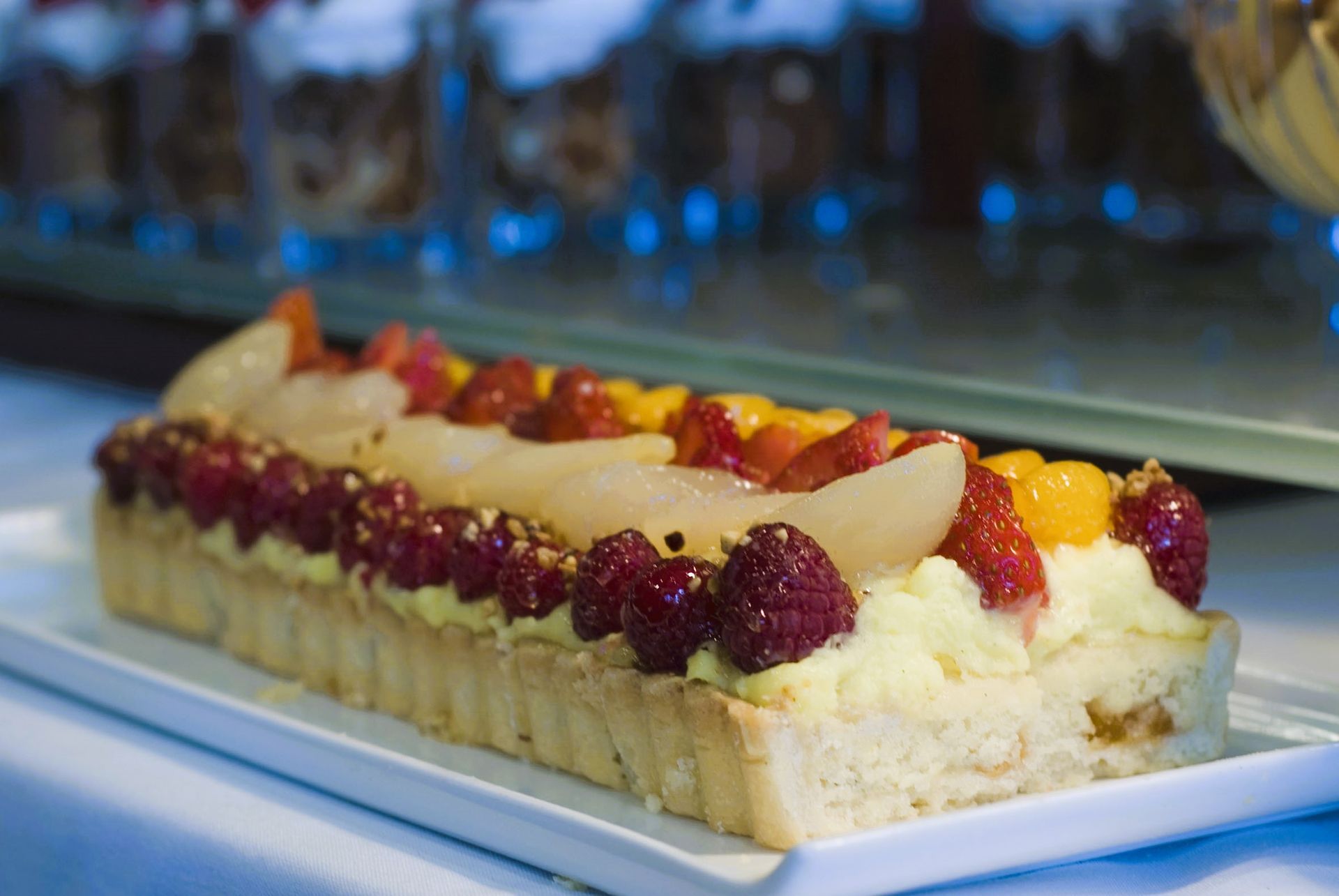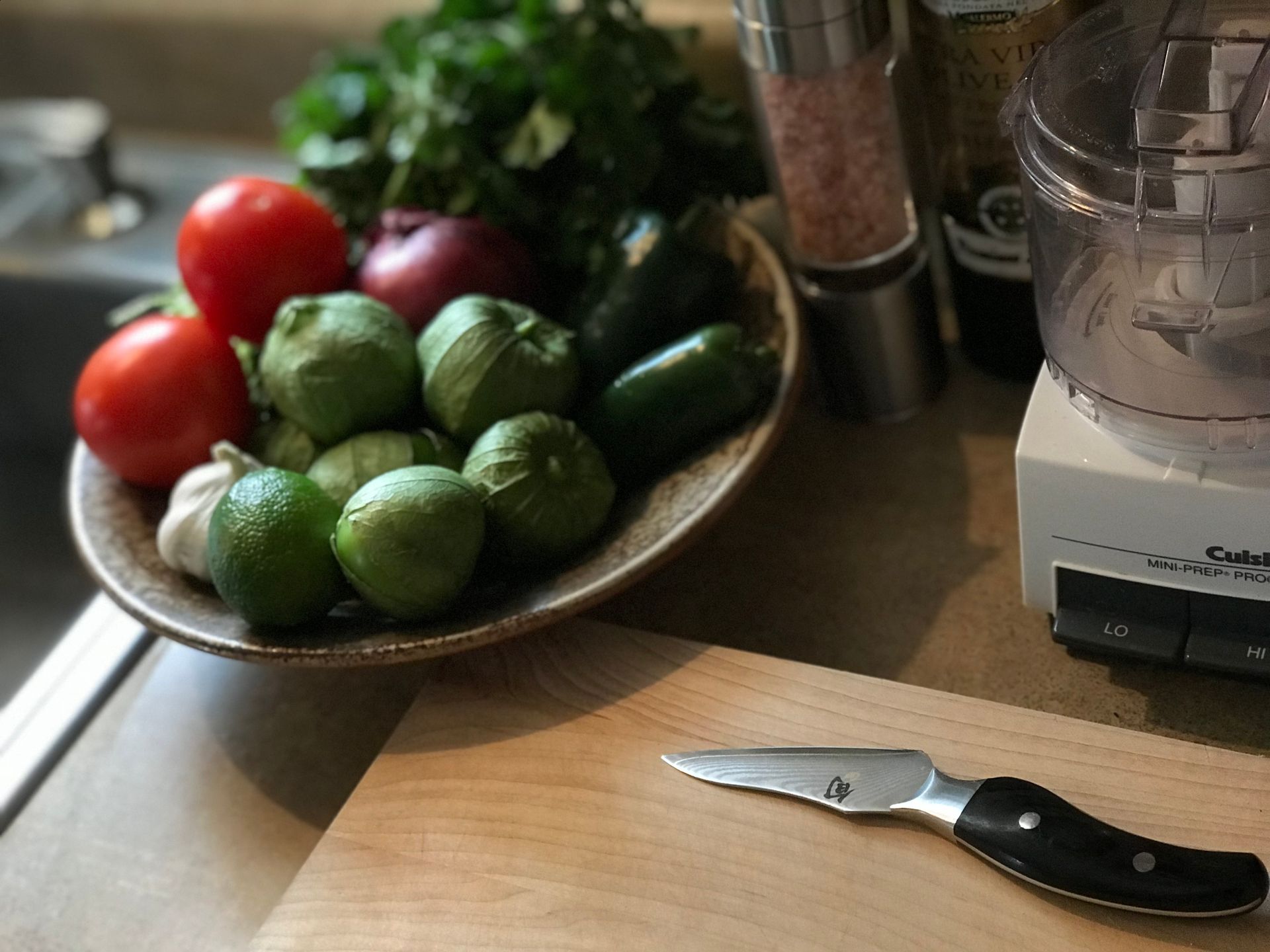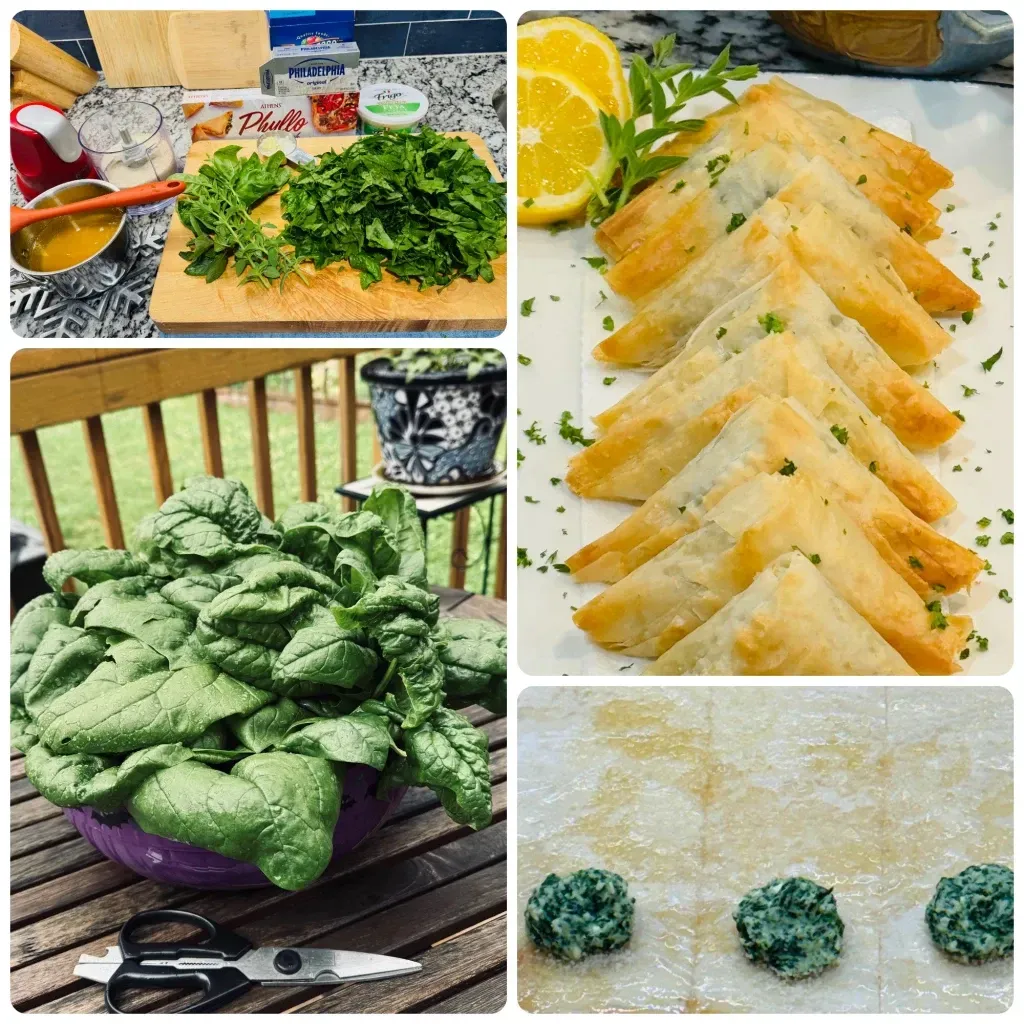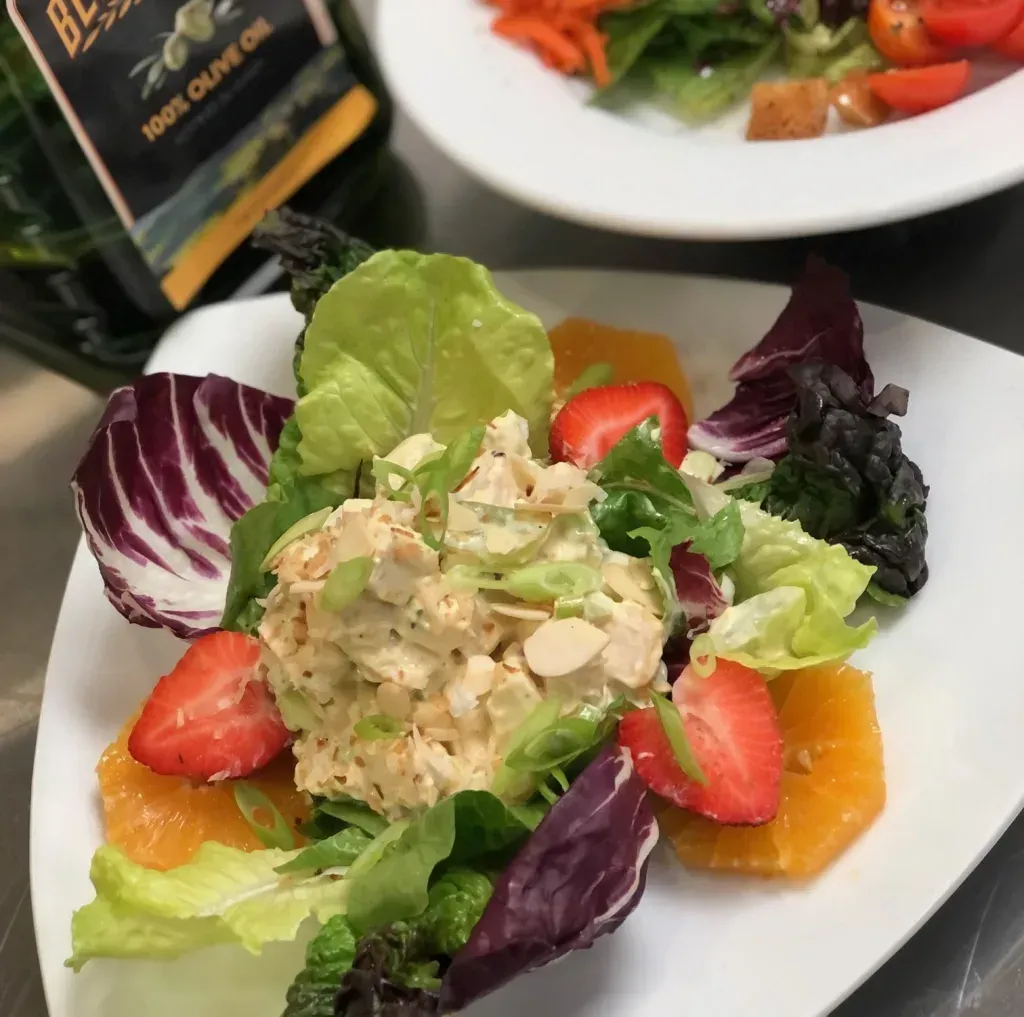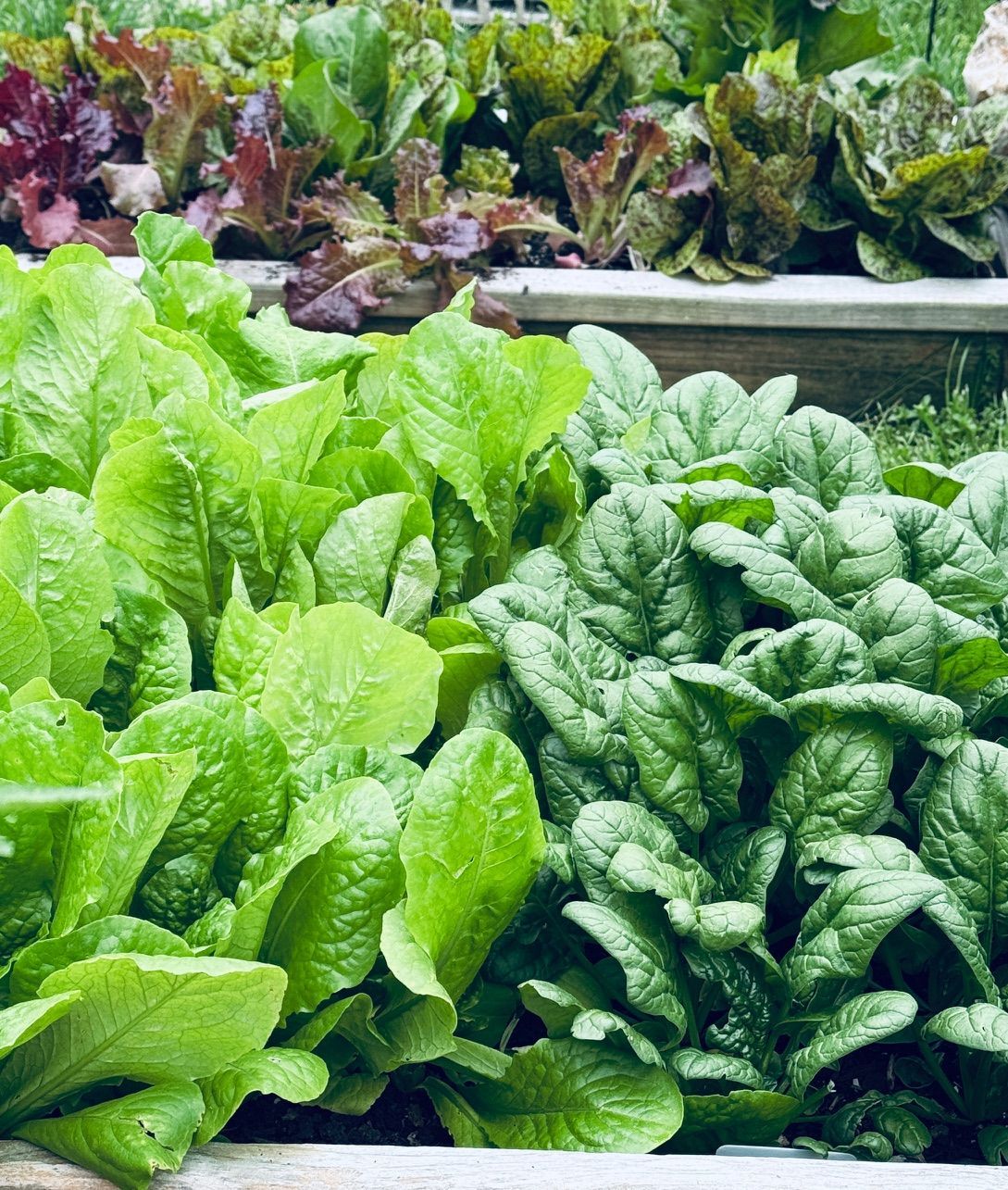What is Garde Manger
The Art and Preparation of Cold Food
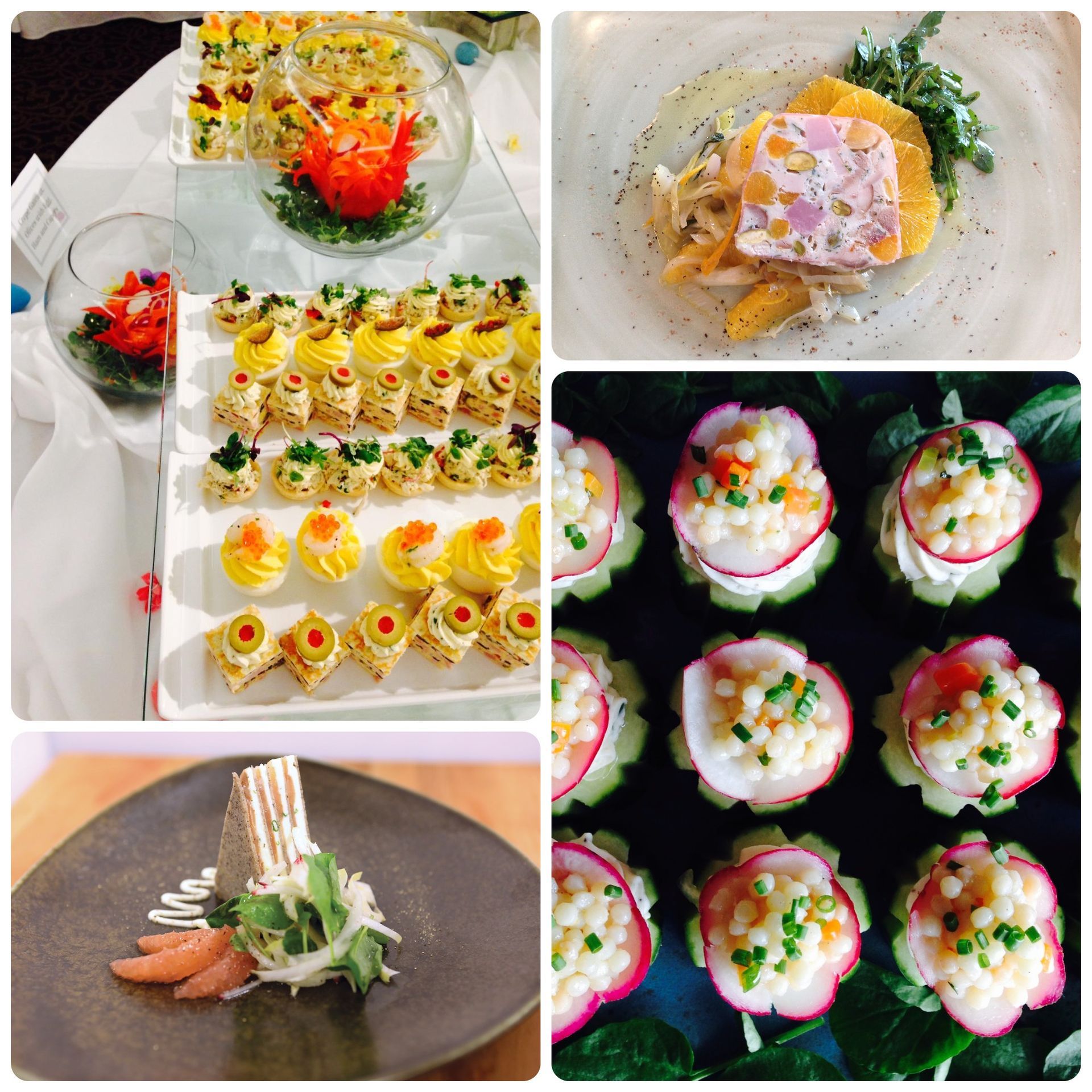
Mention the word Garde Manger to a group of non-culinary people and prepare yourself for a blank stare or the question “What are you talking about?”. In this age of chef celebrities, YouTube how-to videos and TV food shows the world of Garde Manger is not well known. In its simplest form Garde Manger could be described as both the art and preparation of cold food as well as the place in the kitchen where cold food is produced. In smaller kitchens this is often known as the pantry section.
Cold hors d’oeuvres is one category of Garde Manger. This image includes deviled eggs, ham and olive crepe gateau and savory filled tartlettes which are a type of canape. Together this display made a lasting impression for an Easter Buffet when I was the Chef of the University Club of MU.
Mention the word Garde Manger to a group of non-culinary people and prepare yourself for a blank stare or the question “What are you talking about?”. In this age of chef celebrities, Youtube how-to videos and TV food shows the world of Garde Manger is not well known. In its simplest form Garde Manger could be described as the art of cold food preparation and presentation.
Garde Manger is taught in most culinary schools in only one semester in a 3-credit hour class. However, since it is such a broad topic there are a number of textbooks that are written about it. Here is an outline of the categories used in Garde Manger and basically how I teach it in my 8-week class at Ozarks Technical Community College:
Salads – tossed, composed and bound
Cold hors d’oeuvres and appetizers (canapes and tea sandwiches)
Chilled seafood – raw, cured, smoked, poached and grilled seafood (sushi, ceviche, smoked salmon, shrimp cocktail)
Charcuterie (includes pates, terrines, mousses, rillettes, and sausages)
Cold food trays and platters (crudite- vegetables, fruit displays, cheese trays and cold cut and deli trays, etc)
Food Art – Vegetable carving, Fruit Carving
Non-food Art – Ice Sculptor, dough sculptors, butter and tallow sculptors all used as centerpieces for cold buffets
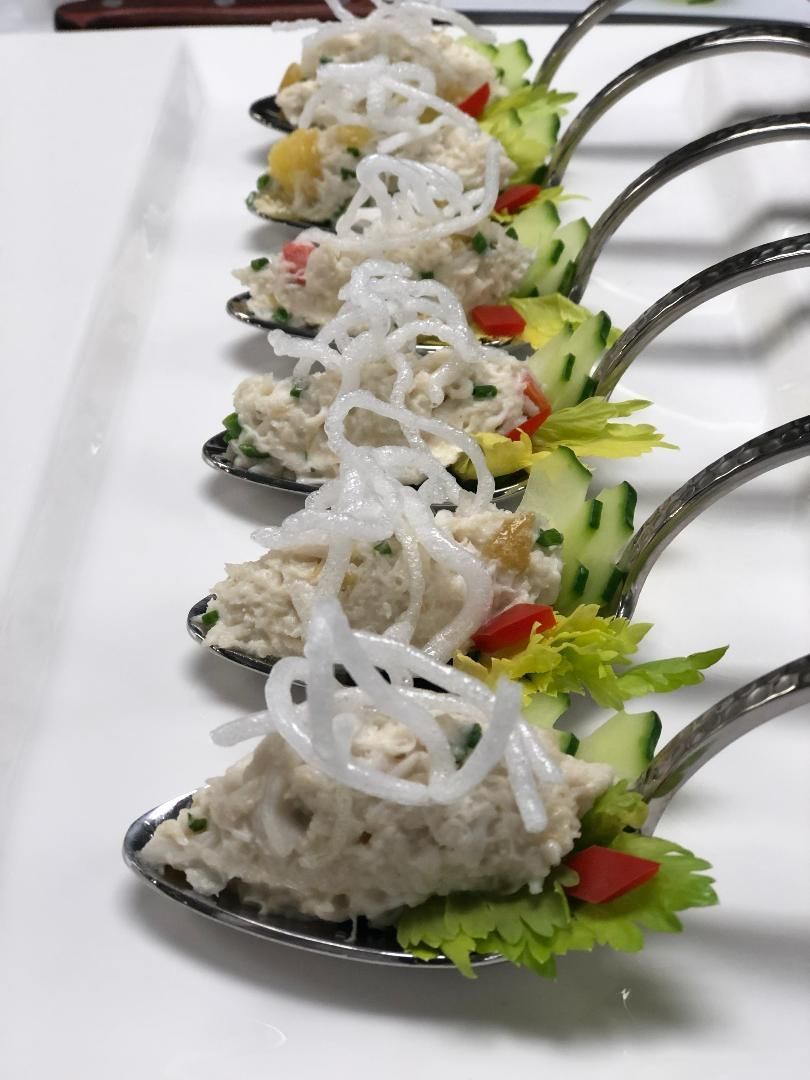
Blue Crab and Mango salad garnished with fried bean thread noodles.
Salads can be divided into three sub-categories: Tossed, Composed and Bound. The most common tossed salad is undoubtedly a green salad made up of a variety of greens and lightly tossed with an oil and vinegar based dressing. Composed Salads are salads that are laid out in a decorative manner and then served drizzled with dressing or dressing served on the side for the guest to use. Bound salads are salads that mixed with a dressing that binds all of the ingredients together – think chicken or tuna salad. Bound salads can be served as is on a bed of greens, in sandwiches or as an hors d’oeuvre such as a single bite serving presented on spoons, as shown in the image above. Two of the most important concepts for this category that I cover are the ratio of oil to vinegar, 3 to 1, to make a simple vinaigrette and the method for preparing mayonnaise to understand the emulsification process.
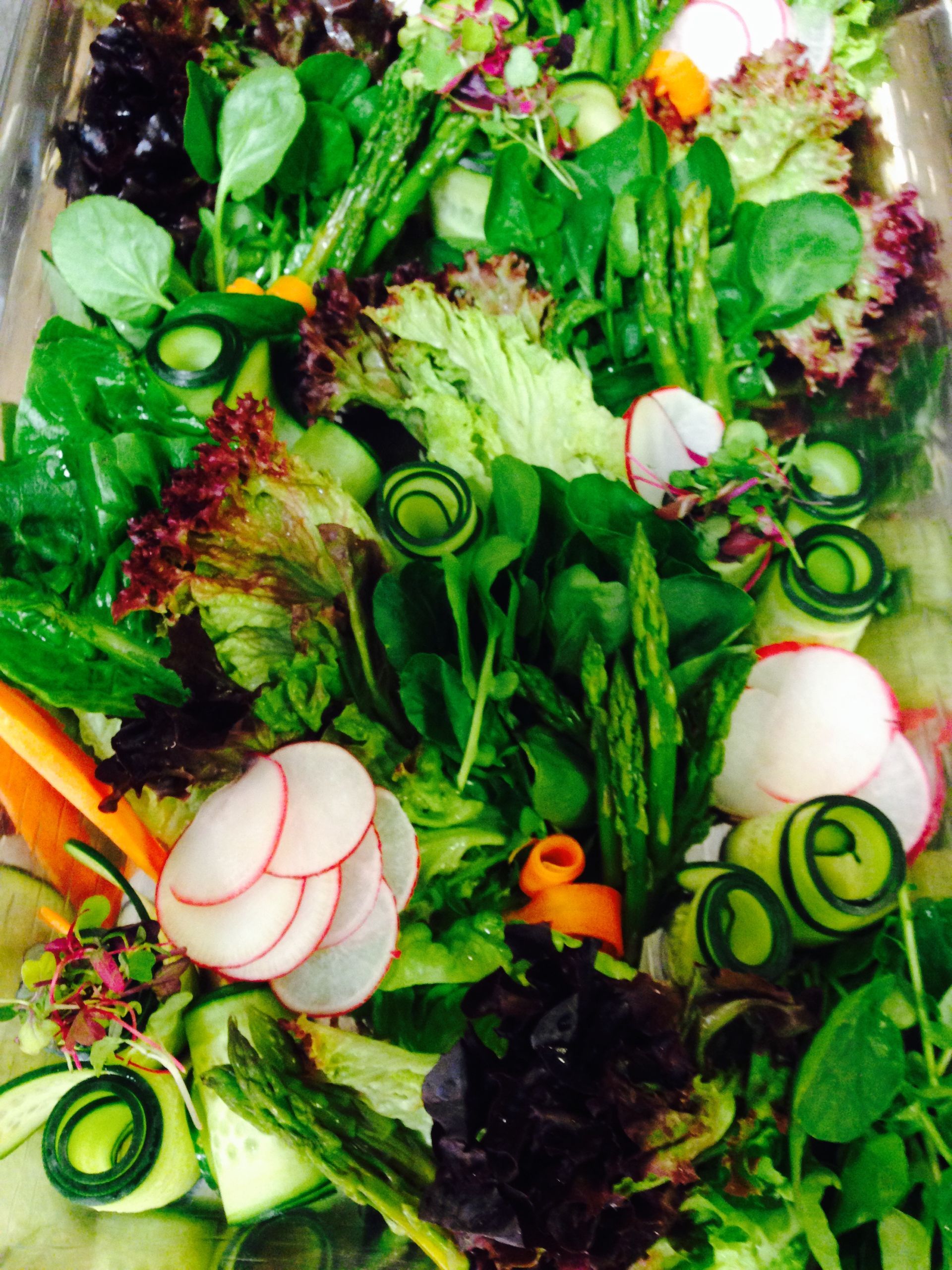
A composed salad is made by laying out the ingredients in a decorative fashion for either a single served course or as a platter on a buffet. The dressing is normally served on the side or drizzled over the salad when served.
Canapes and tea sandwiches are very popular and used for butler-passed appetizers, on a buffet or served on platters as is done in a classic tea party. Canapes are normally made with three components with a standard ratio of a 1/3rd base such as a croustade, 1/3rd spread, 1/3rd main item or garnish. In my class, I offer alternative ideas for bases such as tartlettes, choux puffs, crisp wontons, puff pastry, phyllo pastry, and vegetables. When combined with all of the spreads such as compound butter or herb cream cheese mixtures along with delectable main items such as shrimp, smoked salmon, ham, beef tenderloin or caviar, to name but a few, the possibilities are endless.
Finger sandwiches and tea sandwiches are small dainty sandwiches which are larger than single bite canapes. They are normally two or three bites and usually built with fresh bread. Some examples are chicken salad, ham salad, egg salad or watercress cucumber, to name but a few.
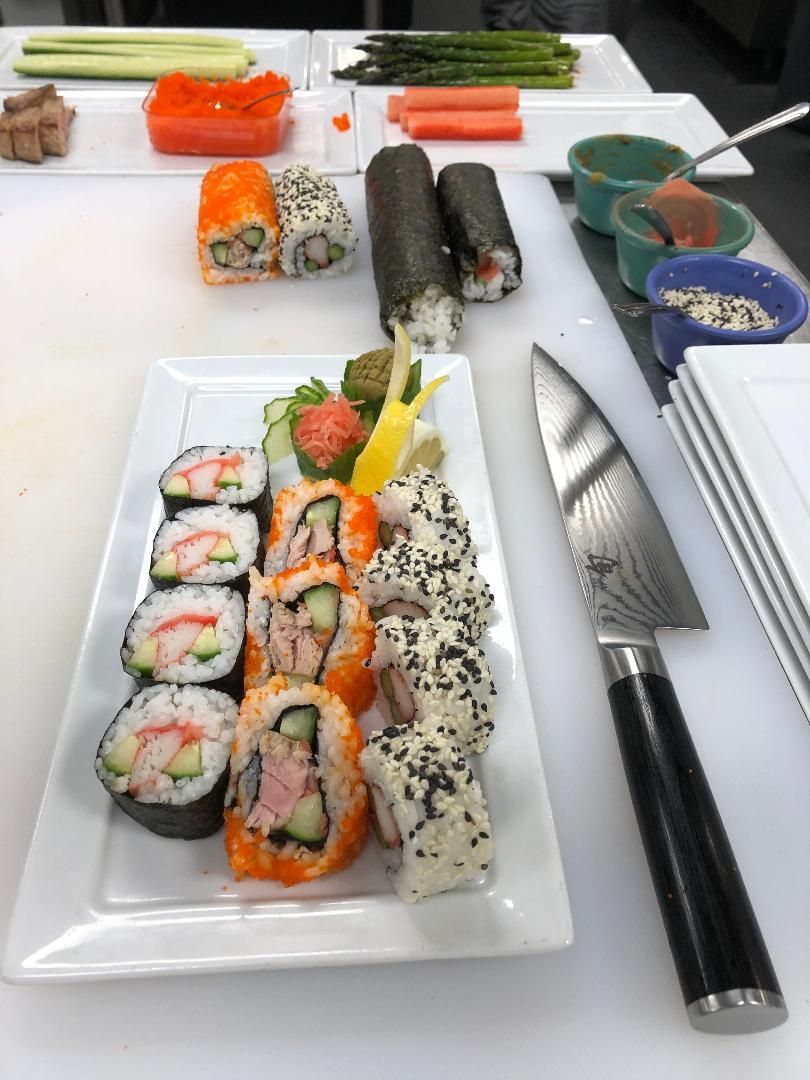
Mono Maki style sushi (translated to rolled Sushi) is one subcategory of this beloved Japanese cold food – extremely popular and served in many restaurants and eateries.
Chilled, smoked and cured seafood covers a vast amount of specialties that include smoked salmon, poached seafood (shrimp and lobster), gravlox and the ever popular sushi. We cover these types of cold food in 2 class periods… not much time when you consider the vast amount of presentations and types of seafood that are served in this way.
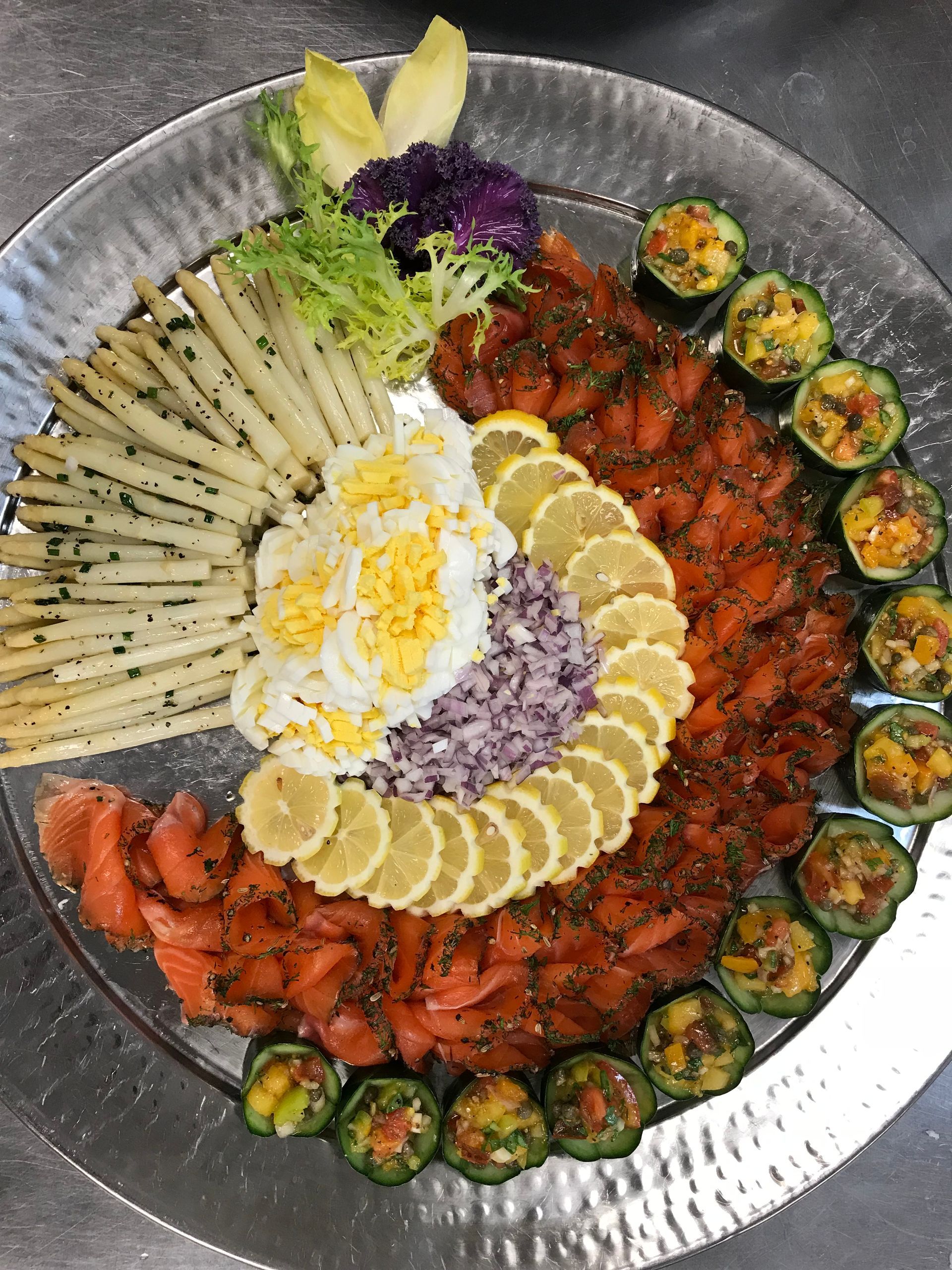
Gravlox is a Scandinavian specialty. It is prepared by curing very fresh salmon with salt, sugar dill, and pepper. Cured in this way it can be preserved for a longer period of time. Traditionally it is served with ice-cold Aquavit.
Charcuterie is a time-honored traditional method for cooking, preserving, and utilizing all of the meat and organs from a pig after it is slaughtered. It includes pates, terrines, rillettes, and sausages of all types. Over time it has evolved into the practice of using other meats (such as game and poultry) and some seafood and vegetables as well. This topic is recently becoming popular again and is the sole subject of some books. A subcategory of Garde Manger, Charcuterie is a highly advanced skill that takes years to master. The methods that I cover in our class are forcemeats, of which there are four types, that are used for pates, terrines, and galantines. We also prepare a simple fresh sausage method so the students can learn the technique of how to stuff sausages into casings. We also discuss some of the other methods and ingredients used in the practice of Charcuterie.
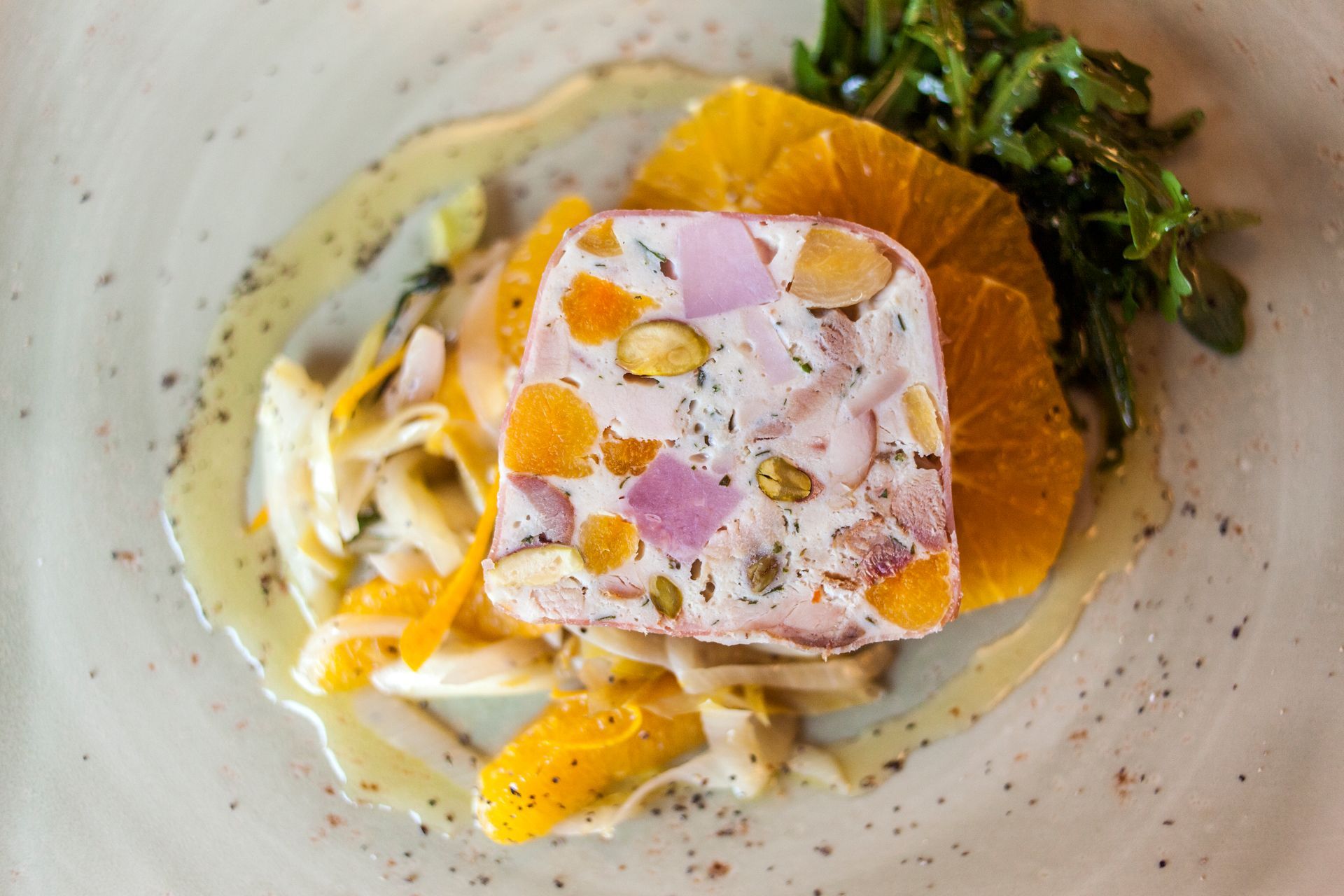
One of my charcuterie specialties is “Chicken and Apricot Terrine.” In it, I use the breast meat for a mousseline style forcemeat and the brine-cured smoked meat from the legs. The terrine also includes diced ham, dried apricots, and pistachios.
Tray and platter design is like any other visual art form and it employs methods and techniques for laying out food in the most decorative eye appealing way. For this portion of the class, I discuss, draw out, show pictures and books that illustrate some of these basic concepts. These are the focal point, flow, slicing, serpentine, tin solder and the use of negative space.
